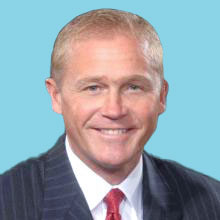Picture this: Your client has two different equity managers. Even though they represent slightly different segments of the equity market, many holdings within these segments are the same. It just so happens that while one sleeve is buying Apple, the other sleeve is selling it. So if a loss was meant to be harvested through this transaction, that loss was just wiped out.
Wash sales issues happen more frequently than you’d think without a centralized trader to coordinate the trading and ensure there aren’t conflicting trades across SMA, ETF, and mutual funds sleeves.
Yet another issue with having two equity managers is that one might be extremely tax efficient and the other not so much. As a result, advisors may end up dealing with the consequences of trades that that one manager made, many of which might result in short-term capital gains.
In order to help prevent these scenarios, we’ve outlined a few tips for optimizing tax management across multiple equity managers and strategies.
Tip #1: Avoid overlap and tax inefficiency through centralized trading
Can your client completely avoid short-term capital gains? Can they be confident that their account is going to be managed to their long-term capital gains tax budget while adhering to their overall allocation among the various managers? It’s more difficult to address these goals if the client has multiple separately managed accounts. This is why centralized trading is so critical.
With a centralized overlay trader you may be able to accommodate a tax inefficient strategy within the client’s UMA account by allowing that centralized trader to look to other sleeves within the account to offset some of the activity of that sleeve. Or opt not to take certain gains in that sleeve.
It’s important to remember that taxes are a client-level concern, not an account-level concern. Having centralized trading functionality can help to ensure that tax efficiency is optimized across all of a client's taxable investment strategies, not just within individual equity SMA accounts.
Tip #2: Synchronize tax management with Unified Managed Accounts
Separately Managed Accounts (SMAs) are professionally managed portfolios in which individual investors directly own the underlying securities, enabling tax management strategies like personalized tax-loss harvesting and strategic timing of gain realizations at the tax-lot level. This structure allows advisors to customize tax decisions based on each client's unique situation, using loss-harvesting, gain deferral, or gain-loss matching to adhere to client specific gains budgets.
Unified Managed Accounts (UMAs) take tax efficiency even further by consolidating multiple investment strategies into a single account with centralized trading oversight. This coordination prevents one manager from triggering wash sales against another's tax-loss harvesting or creating unintended tax consequences through overlapping trades. With a UMA, tax management becomes a portfolio-wide strategy rather than a sleeve-by-sleeve approach, helping to ensure that decisions made in one part of the portfolio enhance the overall tax efficiency across all holdings.
Tip #3: Leverage advisor technology for tax efficiency
At Envestnet, we offer a number of solutions designed to increase portfolio oversight and tax efficiency while reducing the time advisors spend on these tasks.
Our Unified Managed Accounts integrate multiple SMAs, mutual funds, ETFs, and individual securities from various managers into a single managed account. Through a single point of entry, advisors can include virtually all the taxable strategies their clients want to use, whether they be active equity SMAs, passive equity SMAs, ETFs, mutual funds, or bond sleeves, all within one centrally managed account.
Integrated into our UMAs is our Tax Overlay service, which continuously reviews and coordinates trades to help minimize tax liability. Tax Overlay seeks to address the holistic needs around tax management while maintaining the strategy of your client’s portfolio. It goes beyond tax loss harvesting, modeling the tax impacts of all trades specific to your client’s situation to help optimize after-tax returns.
We also offer a Fund Strategist Tax Management service, which is designed to manage tax exposure for Fund Strategist Portfolio accounts invested in mutual funds and ETFs. This automated service manages accounts to client-specific tax sensitivity levels with the goal of reducing tax exposure and optimizing after-tax returns within a primary investment strategy.
It all starts with a clear view
Experienced advisors seek to control taxable events. Centralized trading can help to increase control and better manage exposure. But before trading is centralized, it’s critical to have a holistic view of your clients’ portfolios and all of their taxable assets. After reviewing their assets and specific needs, you can then make an informed decision on portfolio management – whether that means coordinating all of the taxable consequences on your own or fully outsourcing portfolio management through a UMA structure that provides the centralized trading for a fully coordinated approach.
No matter which option you choose, if your client has multiple equity managers, you’ll want to make sure their activities are coordinated. After all, you won't want tax-smart decisions in one sleeve creating tax inefficiencies in another.
Learn how Envestnet Tax Overlay and Fund Strategist Tax Management can help you deliver smarter, more personalized tax outcomes for your clients.
